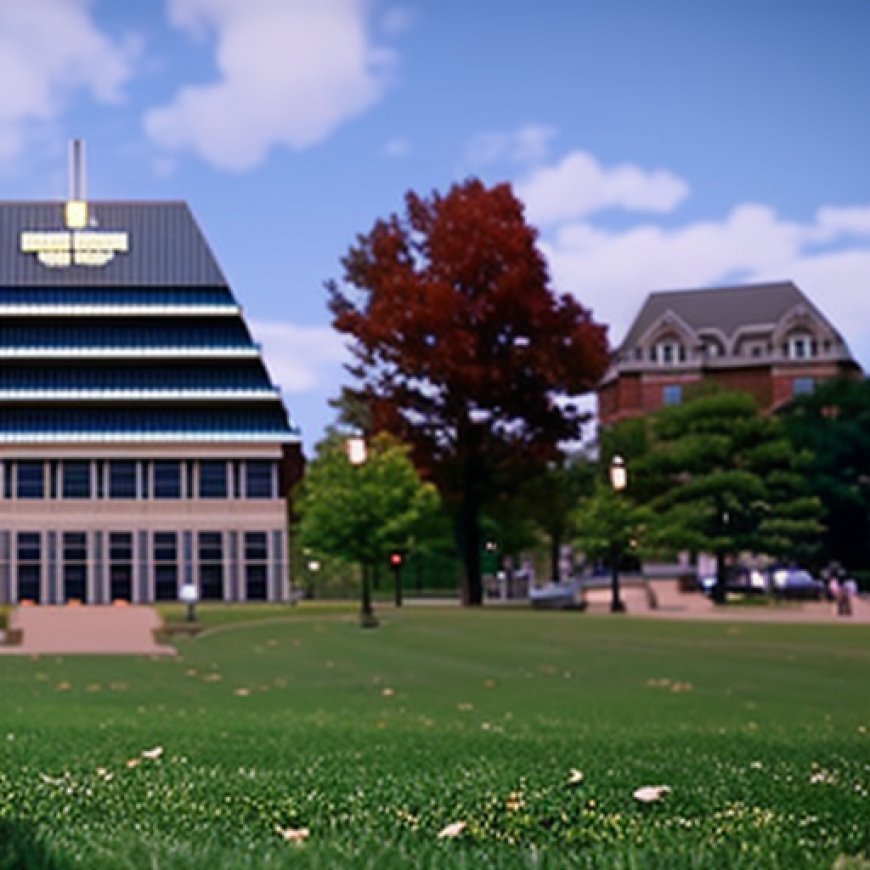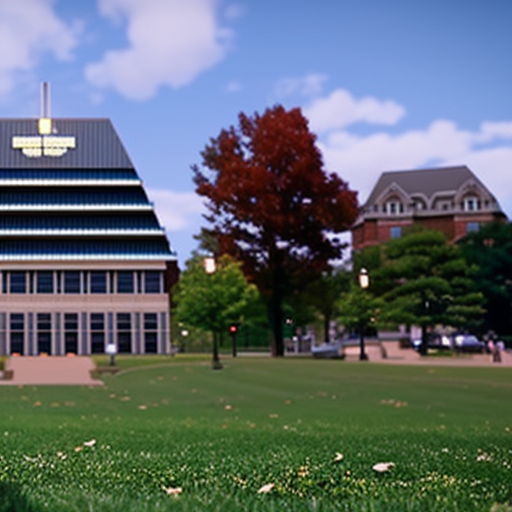Energy use and the Hamline Midway Library controversy – Park Bugle
Energy use and the Hamline Midway Library controversy – Park Bugle Park Bugle


Whole Home Energy Performance: Achieving Sustainable Development Goals
By John Horchner, Commentary
After recently writing an article about my friends Mark and Rhona, who reduced their energy use in their old home by 90%, I discovered a free course in its pilot stage that could teach all of us about whole home energy performance, ending with a Total Building Performance Certificate from the Building Performance Institute.
I signed up.
As expected, the course revealed that deep changes are necessary for most older homes to approach net-zero energy use. Yet, despite the challenges, with some ingenuity and upfront investment, the goal is achievable, even for homes that are more than a 100 years old.
In 2009, I launched EfficiencyPA, engaging with the Department of Energy pilot program and its Home Energy Score program. The goal was akin to the MPG ratings for cars: label homes, create a database and potentially influence the market.
Today—in places like Portland, Oregon—taking Home Energy Score measurements has become mandatory for sellers listing a home, and the market is growing there for energy-efficient homes.
Recently, I reassessed my home with the Home Energy Score. While the basic tool looks the same, the programing has improved. It impressively estimated my 115-year-old home’s annual energy use within 5%, based only on the home’s characteristics.
However, I found the recommended energy-saving measures lacking ambition. I have the same concern with my utility-backed program. Yes, they will come to our house for an energy audit if you’re a customer, but their suggestions are usually limited to “cost-effective” changes suggested in an incremental manner. They are not going to show you how to do big things.
Yet, modern strategies often require profound changes: heat pumps, renewable energy additions, insulation upgrades and comprehensive retrofitting to seal the home may require adding new pipes or electrical systems and removing walls and ceilings.
Big things are needed to save the planet. Saving the planet is what most people want to do.
This lesson was brought home to me after a visit to the Hamline-Midway Library in St Paul.
After bounding the steps, I read a sign that said that the library was closed and to use other branches. Since my car was being fixed, and I had just gone over there to kill time, this didn’t seem like a plausible solution. So, I visited a nearby coffee shop and asked if they knew what was going on with the library. They didn’t know, which only, of course, piqued my curiosity.
When I got home, I went to the library’s website and saw an announcement: “New building coming in 2025.” New building?
I clicked the link for more information under the title: “An update on Hamline Midway Library… January 30, 2024.” It read:
“The lawsuit challenging the building’s preservation continues to delay construction of the new Hamline Midway Library. At this time, we anticipate the trial for this lawsuit to begin in April, after which the judge will have 90 days to consider the matter. Once the trial court’s decision is delivered, we will have a clearer picture of next steps.”
This news was news to me and certainly outside my home energy bubble, but it did intersect.
I looked up and read the city and architects’ initial report for the existing building online. They presented two options. Upgrade the existing building or build a new one. They also detailed the public input process. There was a chart with the results to a survey, where the architectural firm collected nearly 600 responses.
What did the respondents want? The top four responses—each gaining around 50% or more—were accessibility, programing space, energy-efficient design and preserving the old structure.
The city and library system and consultants set to work based on that but developed reservations regarding the space of the current building: foundation problems, past repair costs, moisture and, perhaps most of all, accessibility. They felt the issues could be best remedied only with a new structure, one that would offer 90% energy savings over the old building.
This did not sit well with a group of concerned citizens who’ve banded together and created a website to guide their efforts at Renovate 1558, renovate1558.org.
Not having time to read everything related to the cause and just looking for inspiration from the course I was taking, I think a retrofit or building upgrade could accomplish the city’s and community’s goals or go one even better:
Module 2: Incentives plus Job Creation
Financial incentives for both energy efficiency and historic preservation may be available.
Address the library’s financial health and contribute to local job creation at the same time.
Module 3: Long-term Savings
An upfront investment in comprehensive retrofitting will lead to long-term savings.
Reduce the need for frequent repairs and optimize the library’s energy efficiency.
Module 5: Community Heritage and Engagement
Preserve community heritage and stimulate the local economy.
Encourage community pride and active participation in the library’s transformation.
Module 6: Embodied Carbon Conservation
Retrofitting conserves embodied carbons.
Aligns with global efforts to minimize carbon footprints through strategic building upgrades.
Module 8: Enhanced Accessibility and Functional Upgrades
Improve accessibility with technology and design.
Use advanced HVAC systems, especially heat pumps. Add modern security and other sensors for a safer, healthier environment.
However, caution is advised: While retrofitting can sometimes save significant expenses, costs too can sometimes escalate quickly, as illustrated by a Wall Street Journal article detailing an $800,000 attempt to turn a Frank Lloyd Wright home into a net-zero energy property. After spending the funds, the project still fell short.
This debate—balancing preservation, energy efficiency, financial investment and carbon emissions—is one every community should be actively engaging in. The future of our planet depends on it.
John Horchner is a professional writer who lives in St. Anthony Park.
Photo cutline: The Hamline Midway Library faces possible demolition to be replaced with a new one. Photo courtesy of St. Paul Public Library.
SDGs, Targets, and Indicators
1. Which SDGs are addressed or connected to the issues highlighted in the article?
- SDG 7: Affordable and Clean Energy
- SDG 9: Industry, Innovation, and Infrastructure
- SDG 11: Sustainable Cities and Communities
- SDG 13: Climate Action
- SDG 17: Partnerships for the Goals
The issues highlighted in the article are related to energy efficiency, sustainable building practices, community engagement, and climate action. These align with the above-mentioned SDGs.
2. What specific targets under those SDGs can be identified based on the article’s content?
- SDG 7.3: By 2030, double the global rate of improvement in energy efficiency
- SDG 9.4: By 2030, upgrade infrastructure and retrofit industries to make them sustainable
- SDG 11.4: Strengthen efforts to protect and safeguard the world’s cultural and natural heritage
- SDG 13.2: Integrate climate change measures into national policies, strategies, and planning
- SDG 17.17: Encourage and promote effective public, public-private, and civil society partnerships
The article discusses the need for energy efficiency improvements, retrofitting buildings, preserving community heritage, integrating climate change measures, and fostering partnerships. These align with the specific targets mentioned above.
3. Are there any indicators mentioned or implied in the article that can be used to measure progress towards the identified targets?
- Energy savings achieved through comprehensive retrofitting
- Reduction in carbon emissions through strategic building upgrades
- Financial incentives and job creation resulting from energy efficiency and historic preservation
- Improved accessibility and functionality of buildings
- Community engagement and participation in sustainable initiatives
The article implies indicators such as energy savings, carbon emissions reduction, financial incentives, job creation, accessibility improvements, and community engagement. These indicators can be used to measure progress towards the identified targets.
SDGs, Targets, and Indicators
| SDGs | Targets | Indicators | ||
|---|---|---|---|---|
| SDG 7: Affordable and Clean Energy | 7.3: By 2030, double the global rate of improvement in energy efficiency | – Energy savings achieved through comprehensive retrofitting | ||
| SDG 9: Industry, Innovation, and Infrastructure | 9.4: By 2030, upgrade infrastructure and retrofit industries to make them sustainable | – Financial incentives and job creation resulting from energy efficiency and historic preservation | ||
| SDG 11: Sustainable Cities and Communities | 11.4: Strengthen efforts to protect and safeguard the world’s cultural and natural heritage | – Preservation of community heritage through building upgrades | – Improved accessibility and functionality of buildings | – Community engagement and participation in sustainable initiatives |
| SDG 13: Climate Action | 13.2: Integrate climate change measures into national policies, strategies, and planning | – Reduction in carbon emissions through strategic building upgrades | ||
| SDG 17: Partnerships for the Goals | 17.17: Encourage and promote effective public, public-private, and civil society partnerships | – Collaboration between stakeholders for energy efficiency and historic preservation |
Behold! This splendid article springs forth from the wellspring of knowledge, shaped by a wondrous proprietary AI technology that delved into a vast ocean of data, illuminating the path towards the Sustainable Development Goals. Remember that all rights are reserved by SDG Investors LLC, empowering us to champion progress together.
Source: parkbugle.org

Join us, as fellow seekers of change, on a transformative journey at https://sdgtalks.ai/welcome, where you can become a member and actively contribute to shaping a brighter future.







